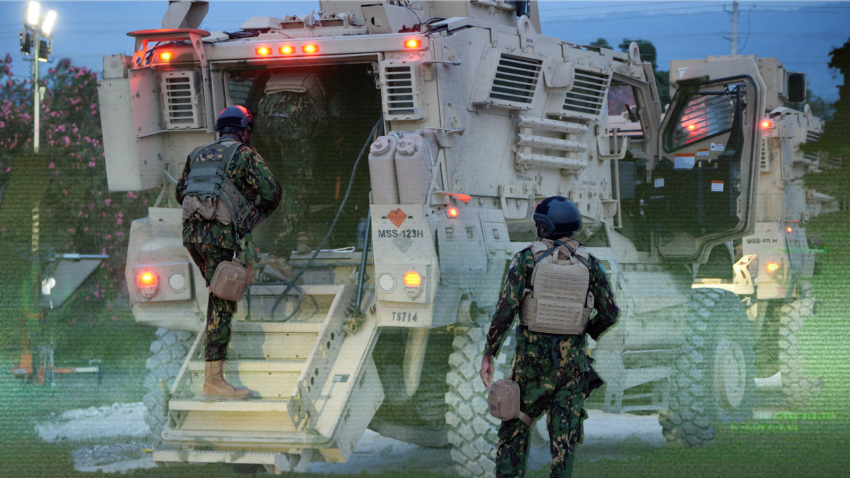By Stuart Ramsay, chief correspondent, in Port-au-Prince, Haiti
The United States is ramping up its support for the mission – as it declares the gangs terrorists.
That designation, combined with the use of increasingly sophisticated surveillance equipment, means this unit and others can now aggressively target gang leaders using lethal force.
It’s understood those kinds of operations are already under way.
The streets are deadly quiet and there is almost no light, there is little electricity in this part of town. There is a brooding sense of menace, the soldiers and police we are with scan roads and alleyways, and use spotlights to peer into darkened buildings, many now ruins after heavy fighting between the gangs and the Haitian police supported by the Kenyans.
The MRAPs make their way through the streets
The MRAPs make their way through the streets
They know gang members are hiding inside, even inside the ruins of their former hideouts, which were once family homes, now taken by the gangs.
The soldiers tell me it will soon start raining. I ask if they’re worried about getting stuck in the torrential downpours so common in this mountainous Caribbean country.
“I’m not talking water,” one of them tells me, faceless in the pitch dark of the vehicle’s interior.
“I’m talking bullets,” he says laughing. The rest of his crew laugh with him.
Ahead of us I see a motorcycle appear from a turning in the road.
Apart from the convoy there is nobody else to be seen, and the Kenyans say in this neighbourhood the motorcyclists are likely to be gang spotters – but they ignore him.
Within minutes the mission commander’s radio crackles into life, one of the other vehicles in the convoy reports gunshots.
